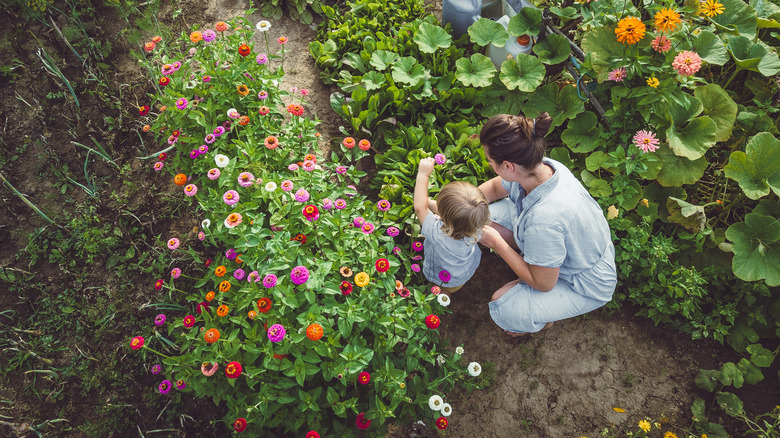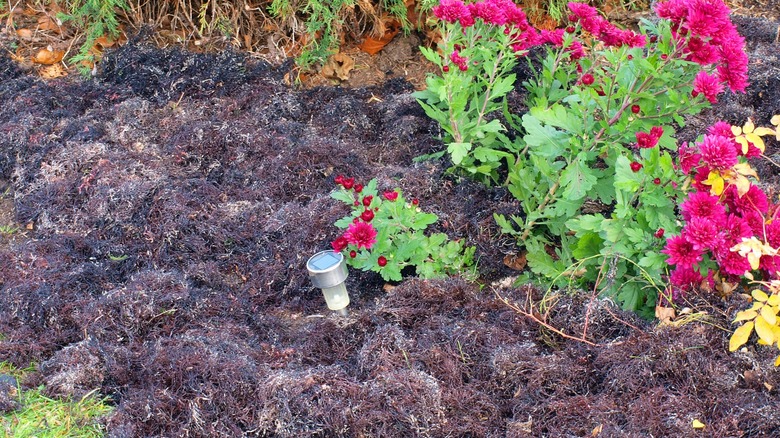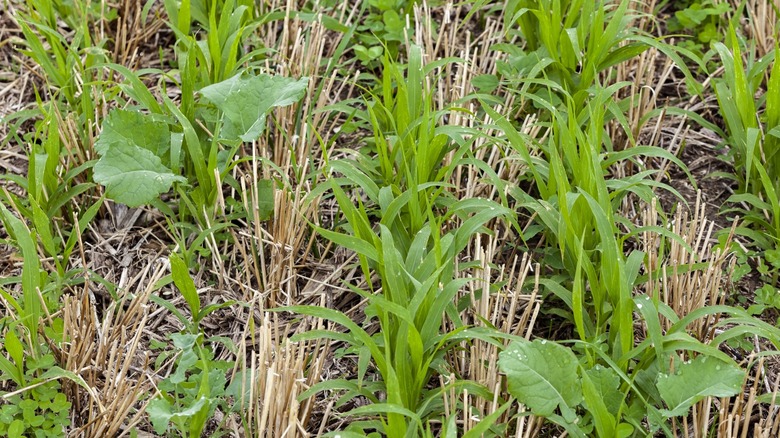The New Forms Of Fertilizer On The Garden Scene That Are Packed With Nutrients
By now, it's likely that you've heard something about regenerative gardening, also called sustainable gardening. It's definitely the latest gardening trend and is expected to grow as concerns around our impact on the environment heighten. It represents organic gardening in its most extreme form — all-natural, completely sustainable solutions. One of the common practices in this trend is using seaweed in the garden. Another is growing green manure or cover crops. Both of these techniques "fertilize" the soil by packing in nutrients.
Seaweed, as a fertilizer, is packed full of potassium, nitrogen, phosphate, and magnesium, to name just a few. Green manure is another name for cover crops; something intentionally planted as a ground cover to prevent weeds and has the added bonus of enriching the soil with nitrogen. Both of these practices offer fertilizing methods that will meet the needs of the soil for growing healthy plants. The reason these two things are so important is because at the core of sustainable gardening is, of course, the soil. The better condition your soil is in, the better the food that's grown in it will be.
Seaweed fertilizer in the garden
Seaweed fertilizer is the first major cornerstone of regenerative gardening. You may or may not have heard of it before, but it's easy to understand why it's gaining traction. Seaweed is super rich in nutrients — it has no roots, so it absorbs all of its vitamins and minerals from the ocean (or body of water) directly. The water is constantly re-enriched through drainage from the land and from organic materials and organisms in the water, both living and dead. Seaweed takes in these nutrients in abundance, making it a perfect fertilizer and mulch. It is also an excellent soil conditioner.
You can use seaweed as an instant, slow-release fertilizer for a wide variety of plants, including fruits and vegetables. It has trace elements of potassium, iodine, iron, manganese, copper, zinc, and phosphorus in usable amounts. You can use it as a mulch, and it will deter slugs and snails. (They don't like the lethally abrasive surface of dried seaweed.) You never have to worry about foreign weed seeds being brought in with this mulch, either. And best of all? It's free, and if you live near a beach, gathering it is a fun family outing! You can also use seaweed from freshwater lakes as well as saltwater bodies, depending entirely upon your exact location.
Green manure as fertilizer
As aforementioned, green manure is a term for certain types of cover crops that provide nutrients to the soil. It's called green manure because it's like living fertilizer; these crops are grown for the main purpose of enriching the soil. They have additional benefits as well, like attracting pollinators and keeping weeds from coming through. One of the common types of crops grown as green manure is legumes, which include several different types of clover, peas, alfalfa, beans, and soybeans. Other popular types are fast-growing grasses, which include winter rye, annual ryegrass, buckwheat, oats, and rapeseed.
To be completely accurate, cover crops are not actually green manure until they've been tilled under the soil, which happens just before the next planting season of regular crops. This allows the soil to be replenished after a season of being depleted. If the soil needs to be enriched with nitrogen, which is often the case after growing many common popular crops, legumes are typically planted as green manure. If the goal is mainly weed suppression, fast-growing grasses are a good option. Both green manure and seaweed fertilizer are important and helpful practices to employ if you're interested in sustainable gardening — they'll help to keep your soil rich and thriving so you can continue to reap the benefits of your garden without harming the earth below.


